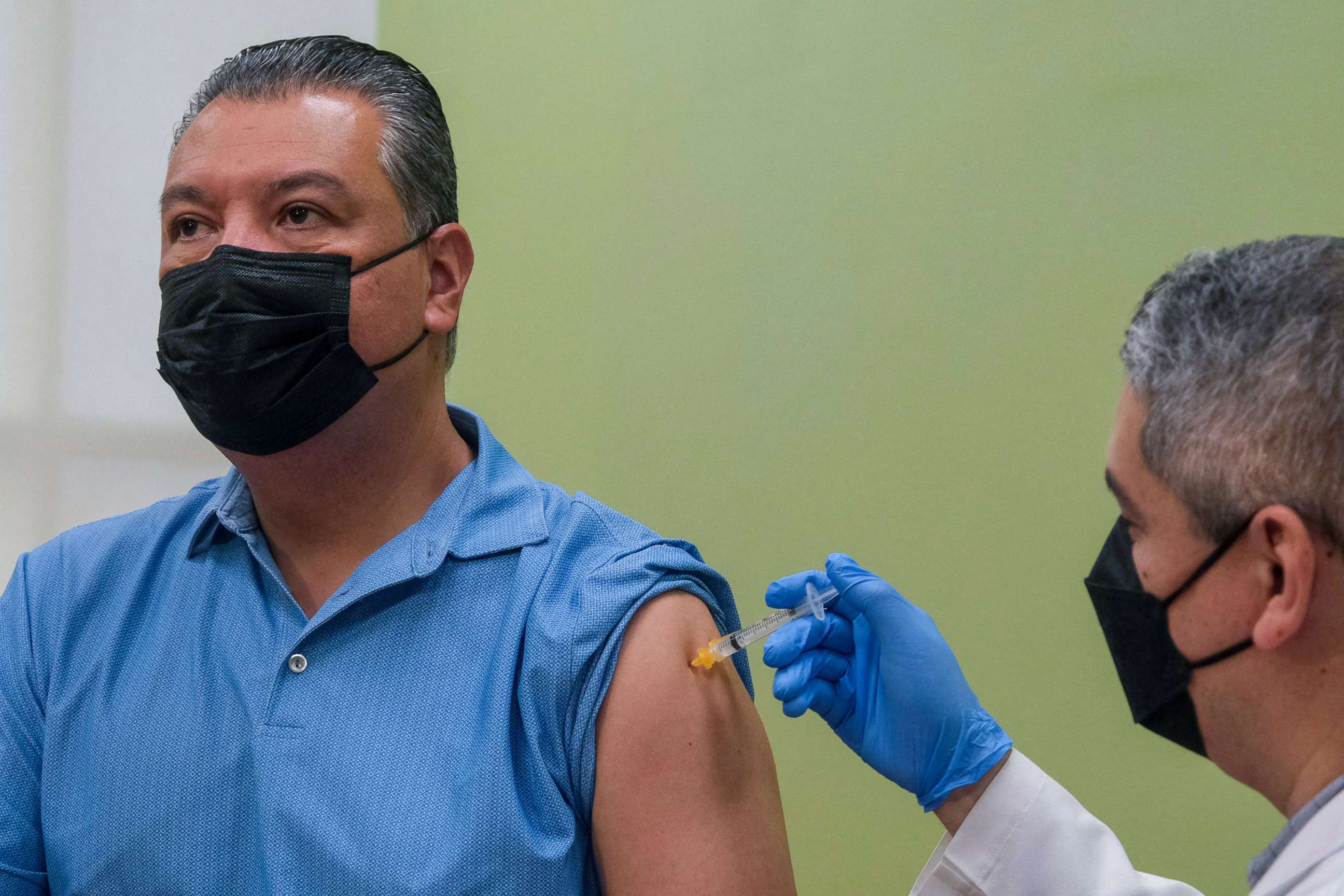11.5M Americans have received updated COVID booster: CDC
Booster uptake has slowed over the past few months.
About 11.5 million Americans have received the updated bivalent COVID-19 booster, according to data from the Centers for Disease Control and Prevention.
The booster was rolled out at the beginning of September with the Pfizer booster approved for those aged 12 and older and the Moderna booster approved for those aged 18 and older.
This expanded to use among those aged 5 and older for the Pfizer booster and aged 6 and older for the Moderna booster Monday.
Experts told ABC News that while it's great many Americans have gotten the new booster, they are worried uptake is not as high as it should be ahead of the colder weather months, when COVID-19 typically spreads much more quickly.

"We clearly have had a slowdown in just overall boosting, and that's driven by a lot of factors," said Dr. John Brownstein, an epidemiologist at Boston Children's Hospital and an ABC News contributor. "One being the fact that we're not in a surge right now. So, there's not this like immediacy of risk that people are facing, and I think that may change as we head into the winter months and potentially new variants emerge."
Brownstein also said there is evidence of COVID fatigue and vaccine fatigue, with people wanting to move on from the pandemic and not thinking of the virus as a major threat.
Another factor may be confusion over who can get the booster.
A new Kaiser Family Foundation poll found half of participants had either heard little or nothing about the new bivalent COVID-19 booster, which targets the omicron subvariants BA.4 and BA.5. Additionally, some Americans don't know if the updated booster is recommended for them.
"There has been challenges in the communication strategy around the booster," Brownstein said. "Is it a booster? Is it an annual shot? There's a lack of awareness that even the vaccine was reformulated. So, I think generally, there's some confusion and lack of awareness that are also slowing down uptake."
The updated bivalent booster targets the omicron subvariants BA.4 and BA.5, which currently make up most COVID-19 cases in the U.S.
That's not to say that some Americans haven't rushed to get the booster.
On Sept. 23, there were 4.4 million people who had received the new booster, meaning more than twice as many have received the booster since.
Additionally, the seven-day average of total vaccine doses being administered rose from an average of 118,000 as of Sept. 7 to 549,000 as of Sept. 28, CDC data shows.
"It does tell you people are still going out and getting that booster," Brownstein said. "There may not have been that immediate sort of rush on vaccines because they're widely available and there wasn't a looming threat."
He continued, "So, we are seeing a steady rise of people still going and getting immunized, which is great. But it would be great to see if we could pick up that pace."
Brownstein said to increase uptake, he recommends continuing to educate the public and spread awareness of the boosters and improving access by making the shot available at community vaccination sites or hubs as opposed to just pharmacies or doctors' offices.




